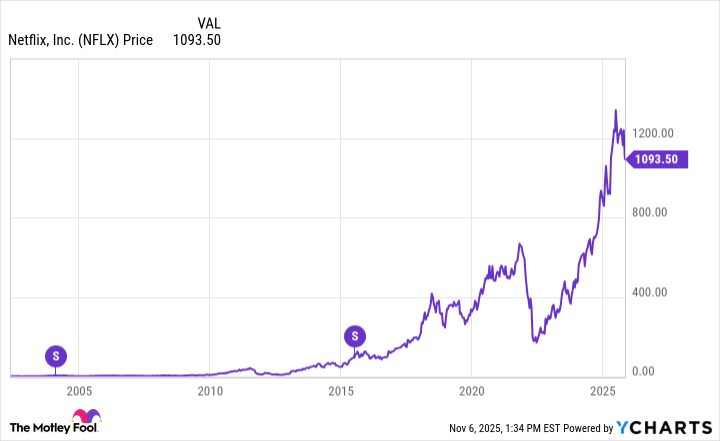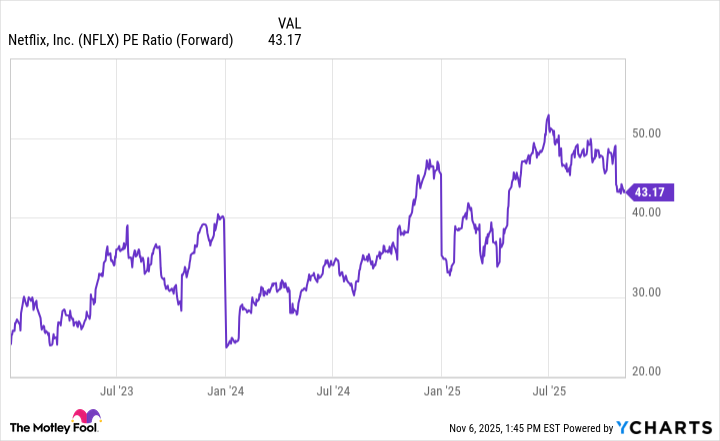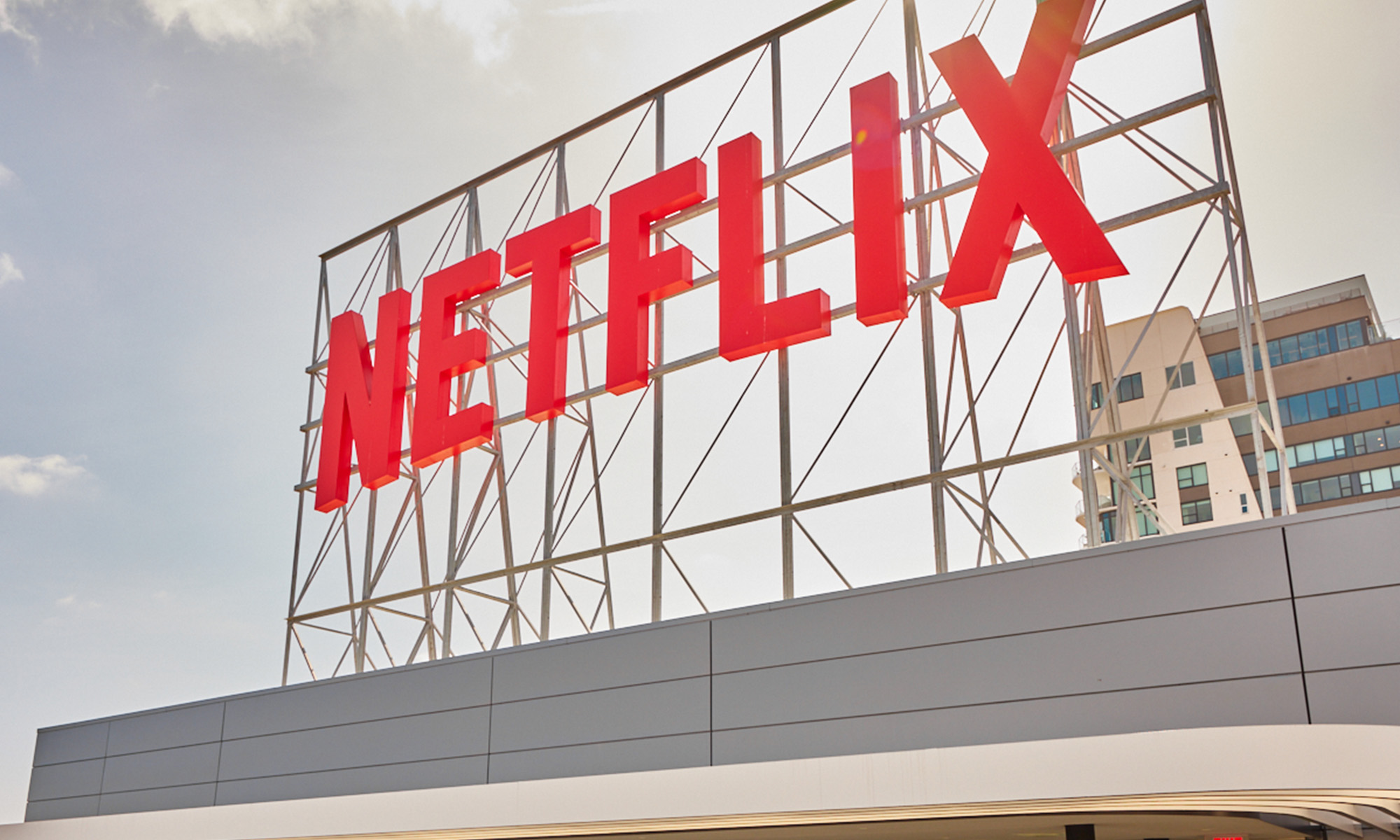It's been an exciting year for Netflix (NFLX +0.15%) investors. Despite rising competition from other platforms -- including Disney, Alphabet's YouTube, Amazon Prime, and Apple -- Netflix has proven that its content remains king in the streaming realm.
For the last several quarters, the company has demonstrated its ability to consistently acquire new subscribers while also maintaining existing customers. This combination has fueled record levels of revenue and earnings growth. It's not surprising that investors have been cheering on Netflix throughout 2025 -- sending its share price well above $1,000.
With so much momentum fueling the stock, many on Wall Street have been anticipating that Netflix would announce a stock split. These wishes became reality, as Netflix recently announced that a 10-for-1 split is set to occur later this month.
Let's explore how stock splits work, and assess why now looks like a no-brainer opportunity to pounce on Netflix stock before the split goes into effect on Nov. 17.

NASDAQ: NFLX
Key Data Points
What is a stock split and how does it work?
Stock splits sound like some advanced financial jargon, but they are actually quite easy to understand.
During a split, a company increases the number of outstanding shares by the stated ratio. In the case of Netflix, this means the company's share count will rise by a factor of 10. Given the higher number of outstanding shares, Netflix's stock price naturally "falls" by the same multiple.
If Netflix were to complete its stock split today (Nov. 6), the company's share count would rise from 423,732,334 to 4.2 billion and its share price would decrease from $1,092 to about $109. Given these dynamics, a stock split does not inherently change the market capitalization of a company. In essence, stock splits are merely a form of financial engineering.
One of the biggest factors that influences a company to pursue a stock split is that the "lower" share price is perceived as cheaper by retail investors who may have held back from buying a $1,000 stock. While this sentiment is purely psychological, ushering in a new base of investors can help increase Netflix's trading liquidity.

Image source: Getty Images.
Why November and December could be monster months for Netflix
The upcoming split later this month will be the first time since 2015 that Netflix split its stock. As the trends below show, shares of Netflix experienced a bit of a run-up prior to its last split. This is not surprising, as smart investors likely anticipated that trading activity would rise following the split -- thereby propelling Netflix's valuation higher as retail investors poured into the stock.
This is an important dynamic to understand. While stock splits themselves do not change the valuation of the company, rising inflows of investors can fuel the share price -- and therefore the market value -- of the company significantly higher after a split occurs.
To me, the bigger catalyst on the horizon for Netflix is the long-awaited return of one of its most celebrated pieces of content: Stranger Things. According to Netflix's data, Stranger Things is the third-most watched show of all time on the platform.
Unlike prior seasons, the final installment of Stranger Things is going to feature a staggered release -- with episodes airing Nov. 26, Dec. 25, and Dec. 31. I think this strategy is pretty savvy, as it should keep existing subscribers and viewers of the show tied to the platform while also generating a good deal of media buzz and word-of-mouth style marketing -- potentially leading to an influx of new subscribers eager to catch up on content.

Image source: Netflix.
Is Netflix stock a buy right now?
Netflix currently trades at a forward price-to-earnings (P/E) ratio of 43 -- near its highest levels in three years. While the company undoubtedly sports a premium valuation, I think Netflix is well deserving of its prices.
NFLX PE Ratio (Forward) data by YCharts
The combination of predictable revenue, expanding profit margins, and compounding earnings is a rarity for any business -- let alone a media and entertainment company. Unlike some of its peers, Netflix doesn't seem to be affected by seasonality or the sensitivity of consumer discretionary spending habits.
In essence, Netflix has created a sticky ecosystem featuring millions of users glued to the company's content. Management understands these dynamics, hence they remain focused on building Netflix into a trillion-dollar enterprise by next decade.
While the company certainly has some near-term catalysts, the biggest takeaway is that Netflix stock has steadily climbed throughout its history -- prior to and following stock split events, as well as growing into any momentum surrounding new content releases.
For these reasons, I think now is as good a time as ever to scoop up shares of Netflix stock with the intention to hold on for the long run.







